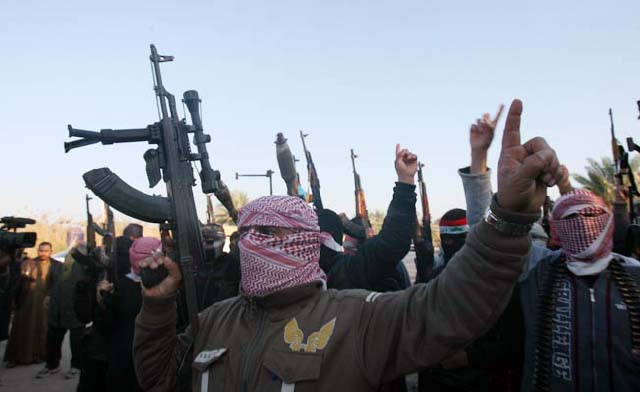Sectarian violence is one of the most serious issues being practiced by the radical militants in both Afghanistan and Pakistan and people are killed on the grounds of their caste, creed and color. The Islamic State Khorasan Province (ISKP) is widely involved in stoking sectarianism. The ethnic minority groups fall victim to their violence which stems from fundamental ideology. Afghanistan is believed to be immune to sectarian violence before the emergence of the Islamic State group and this issue is the product of their harsh mentality and political plot.
After a decline in scale and casualties, Violence against sectarian minorities is once again resurging in Pakistan, Afghanistan. In the last two weeks, Lashkar-e-Jhangvi (LeJ) Al-Alami, an anti-Shia extremist outfit, has claimed responsibility for the murder of four Hazara Shia women in Quetta and the attack on an Imambargah in Karachi. During the same period, two deadly attacks of almost similar nature were plotted against Shia worshipers in the country, one in Kabul and the other in the northern Balkh province. Since 2014, sectarian terrorism, spearheaded by the Khurasan chapter of the Islamic State, has emerged as a new potent threat in Afghanistan alongside the Taliban insurgency.
There are operational linkages between anti-Shia outfits in Karachi, Balochistan, and those operating across the western border. According to reports, the IS-Khurasan assigned the killing of the Hazara women in Quetta to Tehreek-e-Taliban Pakistan’s (TTP) Karachi chapter, which then outsourced it to the LJ-al Alami in Balochistan.
The deadly attack on police academy in Quetta – which killed at least 60 people and wounded dozens more – was allegedly carried out by Al-Alimi faction of the Lashkar-i-Jhangvi (LJ). However, the militant IS group also, separately, claimed responsibility for the attack.
Militants have been targeting security forces in the area for almost a decade. The college came under attack in the past in 2006 and 2008, with attackers firing rockets into the college playground. It covers about an acre of land located about 13 kilometers outside the main city of Quetta.
According to the South Asia Terrorism Portal database, Pakistan suffered a peak in sectarian violence between 2007 and 2013, which left 2,714 people dead in as many as 905 violent incidents. Since then, the sectarian attacks dropped sharply across Pakistan in 2014 and 2015. In these two years, the sectarian incidents and casualties came down to 144 and 484, respectively.
ISKP has, over the last year, claimed more than a dozen attacks in Afghanistan, too. Half of them were untraceable to any actual incident and thus remain empty claims. Some were claimed by both the Taliban and ISKP, but with the latter often providing more convincing detail. One of the initial attacks was a small bomb which exploded outside the largest and oldest place of worship for Shias in Kabul in the lead-up to Ashura in 2015. One person was killed and several wounded in the blast in Chandawal, in the centre of the capital. The bulk of ISKP’s attacks in Kabul, however, have taken place since summer 2016. Several of these attacks are noteworthy for their deadliness, political implications or complexity.
In recent decades, compared to most conflicts in the Muslim world, Afghanistan has stood out for the absence of such fratricide. ISKP, during the short period since its emergence, has, however, showed no hesitation in stepping into this un-mined area. While the Ashura and July 2016 attacks in Kabul are the most remarkable examples of sectarian violence by ISKP, the overall sectarian trend that is emerging since the group’s advent has been much wider.
By standing prominently for a sectarian cause, ISKP is trying to cater to all those fanatics who have long missed a militant organization with this explicit aim. This is, potentially, an untapped ‘market’. If ISKP manages to attract such extremists, it could considerably boost its membership and support base, especially among the educated urban youths.
Sowing the seeds of sectarianism in Afghanistan is highly dangerous and will lead to horrible consequence since urban teenagers show inclination towards it. It is believed that during the Taliban’s regime, their infectious mindsets were implanted within urban cultures and they spew forth the venom of radicalism. Hence, as there is the potential of radicalization among the dregs of society, the ISKP seeks to actuate it not only through preaching their ideology but also through financial supports.
Stoking sectarianism was also practiced by former kings in Afghanistan. The policy of “divide and govern” will work well in the frame of fueling sectarian emotions. Employing the naïve urban youths under the aegis of fundamental narrative of religious texts will be hardly abortive.
It is believed that madrasahs, be it in Pakistan or Afghanistan, are the hotbed of radical mindsets and must be under the cautious watch of Afghan-Pak officials. In a nutshell, many guerilla fighters come from madrasahs – the fighters are mostly from the poverty-stricken areas. The counter-insurgency will come to fruition if the root of radicalism be eliminated. The ISKP, which has turned out highly dangerous and dispose of the individuals for their certain beliefs and color, will have to be combated strongly and bilaterally.
Home » Opinion » A Surge in Sectarianism
A Surge in Sectarianism
| Hujjatullah Zia

